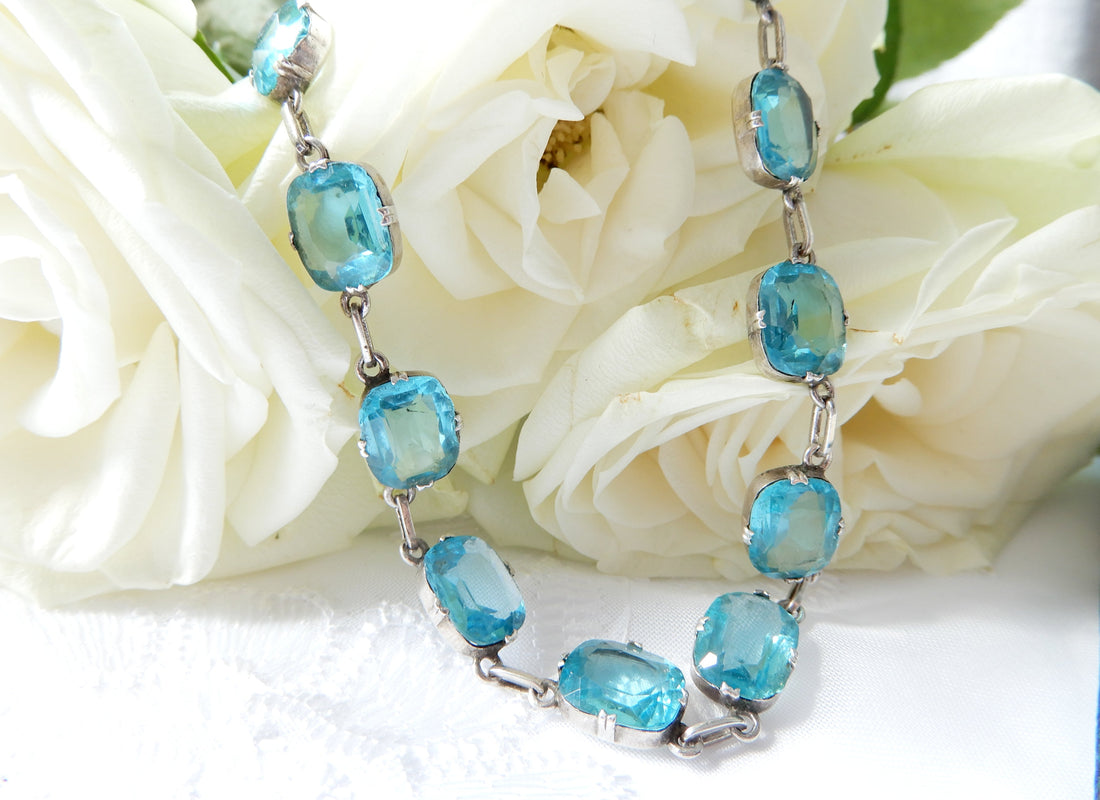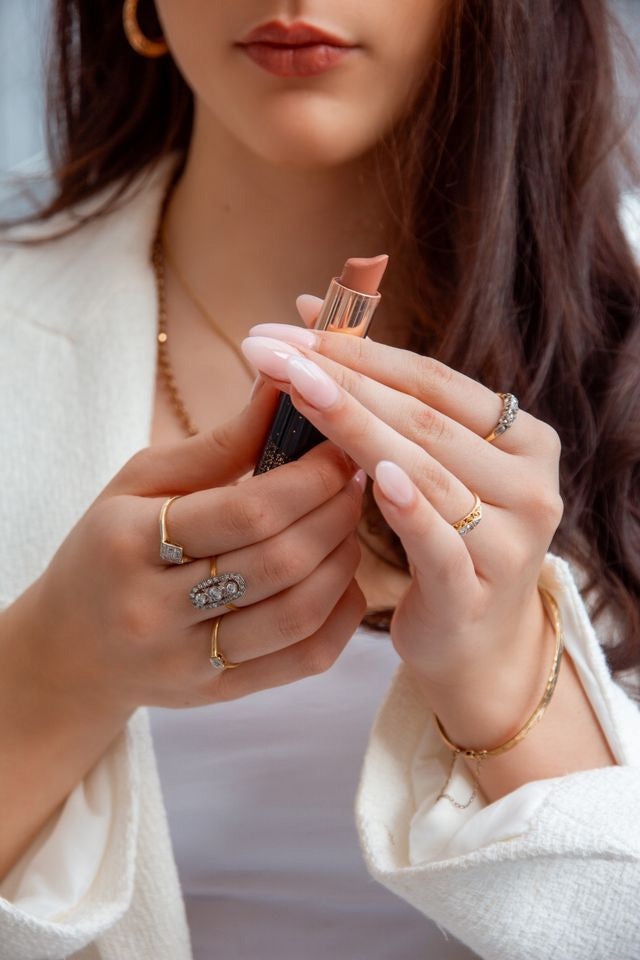We all love and adore brilliant diamonds and exquisite gemstones. There's such a joy in wearing beautiful gemstones, which gets the nod of approval from appreciative onlookers. However, draping yourself in thousands of pounds worth of Diamonds isn't always feasible or wise.
Antique paste stones, with their vibrant colours and rich history, are a wonderful alternative for jewellery enthusiasts. These fascinating gems, often mistaken for real diamonds or precious stones, are celebrated not only for their beauty but also for their remarkable craftsmanship. But what exactly is a paste gemstone? In this piece we shall look at the origins and creation of antique paste stones.

The origins of paste jewellery traces back to the mid-18th century, attributed to jeweller Georges Frédéric Strass. During a time when the demand for fine jewellery was soaring among European aristocracy. You can just imagine all the high Society Balls with all the ladies draped in their finest wares. After moving from Strasbourg to Paris in 1724, Strass served as a jeweller to the King Louis XV of France. His work gained significant recognition and was highly valued at the court of Louis XV. His name remains synonymous with the craft, as high-quality antique paste jewellery is often referred to as "Stras" or "Strass."
Strass's invention came at a time when diamonds and other gemstones were rare and expensive, accessible only to the elite. Paste stones democratized the world of fine jewellery, allowing more people to enjoy the splendour of fine-looking jewellery. The popularity of these faux gems spread rapidly across Europe, particularly in France and England, where they were used in everything from brooches and necklaces to tiaras and shoe buckles.
Here is another example of an Antique Paste Riviere Necklace which was sold at Milly's Marvels a little while back. I still think about this necklace and regret not keeping it!

The popularity of paste jewellery soared throughout the Edwardian and Art Deco eras, reaching its peak around the 1920s. Despite its widespread popularity, the production of traditional paste jewellery began to decline around 1930. The advent of new synthetic materials and changes in fashion trends led to a shift in consumer preferences. Below we have an example of a German-made Art Deco bracelet adorned with a Sapphire Paste Stone.

Creating antique paste stones was a meticulous and skilled process. Artisans would start with a high-quality glass, often infused with lead to enhance its brilliance and refraction. This glass was then melted and coloured with various metal oxides to mimic the hues of different gemstones, such as rubies, emeralds, sapphires, and amethysts.

Once the glass had cooled and solidified, it was cut and hand polished using the same techniques employed in the cutting of genuine diamonds. The facets were crafted to maximize the stone's ability to reflect light, creating a scintillating effect that closely resembled natural gemstones. The finished stones were set in silver, gold, or other metals, often surrounded by intricate designs that highlighted their beauty.
Frequently, paste jewellery was enhanced by setting it with a metal base, commonly referred to as "foil," to enhance the colour and brilliance of the glass. Additionally, the glass could be coloured, offering a range of options such as red wine coloured Garnets or stunning emerald green.
One of the distinguishing features of antique paste jewellery is the attention to detail in both the stones and their settings. Unlike modern costume jewellery, which is often mass-produced, each piece of antique paste jewellery was handcrafted and labour intensive, resulting in unique and often intricate designs.

Despite being imitation gemstones, paste stones are prized in their own right. They were commissioned by royalty and nobility, not as mere substitutes for real gems but as beautiful works of art. Queen Marie Antoinette and other notable figures of the era were known to wear paste jewellery, further cementing their desirability.
The appeal of antique paste stones extends beyond their historical context. Collectors and enthusiasts today still appreciate these pieces for their craftsmanship, beauty, and the stories they tell.
Browse and shop our Antique Jewellery Collections here.


